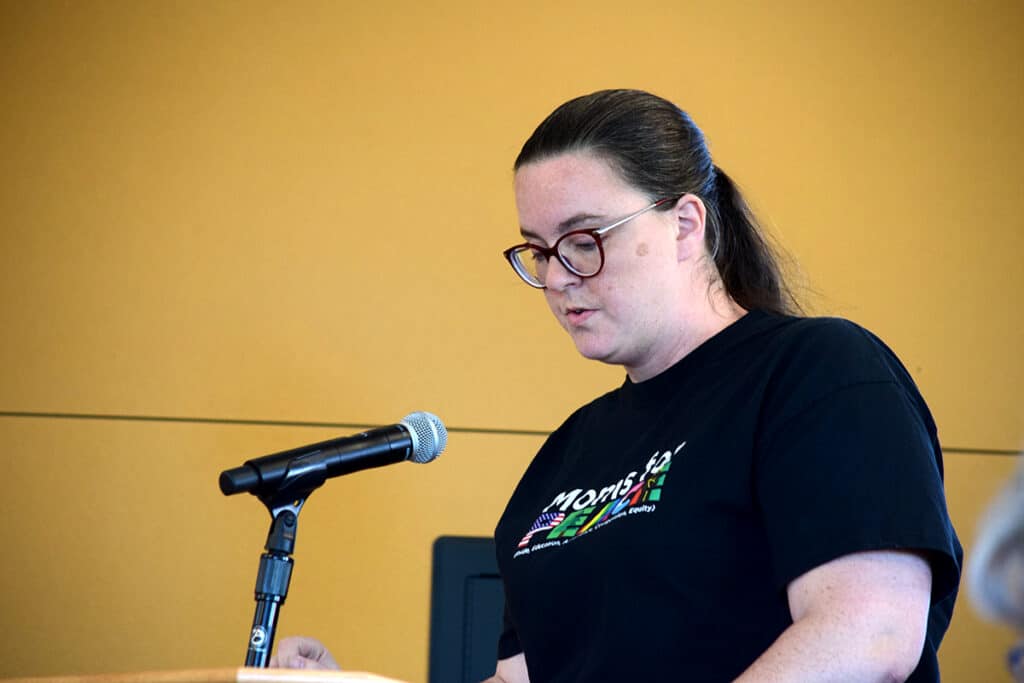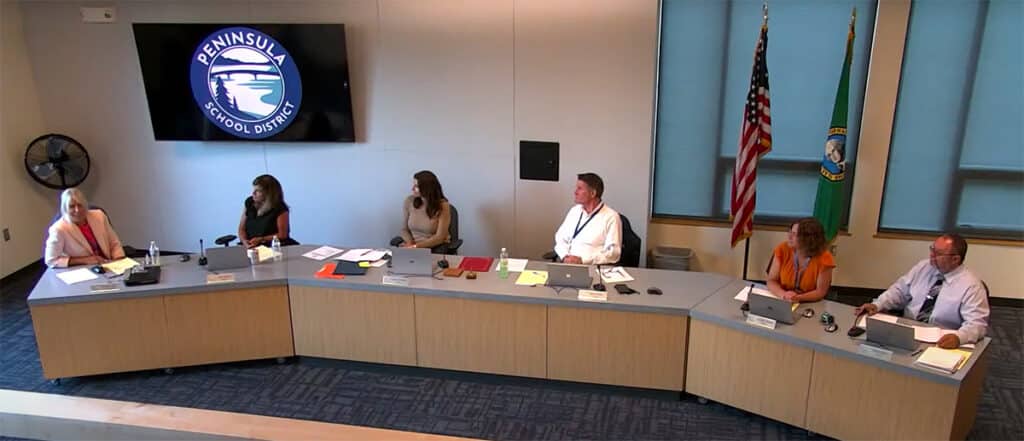Community Education Health & Wellness
Healthy Youth Survey shows positive trends in Peninsula schools
Mental health outcomes for Peninsula District students are comparable to their peers in Pierce County, according to a recent statewide survey. But results also underscore recent concerns from community members about bullying at district high schools.
Data from the 2023 Healthy Youth Survey showed positive trends for students across Washington. The survey is an anonymous statewide questionnaire that asks teens a series of questions about their mental health, substance use and relationships.
Rates of depressive feelings declined. Thoughts of suicide, after years of rising, reached a two-decade low.
“An interesting thing about suicidal ideation and attempts, these were dramatically increasing through 2018 across the state, the county and our school district,” James Cantowine, director of secondary teaching and learning, told the Peninsula School Board on June 18. “Then they plummeted after the pandemic and they are still trending down.”
Statewide survey
The Washington Department of Health and Office of Superintendent of Public Instruction administer the Healthy Youth Survey to quantify the health and well-being of the state’s youth. Over 217,000 students across the state took the survey, including about 55% of Peninsula School District 10th graders.
Staff presented results of the survey to the Peninsula School Board last month.
Although not without its flaws, the bi-annunal questionnaire has become a key metric for legislators, educators and health officials to create programs and policies addressing student needs. The 2023 survey was only the second iteration since the COVID-19 pandemic and broadly showed positive results for students.
Results on par with Pierce County
The survey found that 28% of Peninsula 10th graders reported depressive feelings in the last year. The study defines that as feeling sad or hopeless almost everyday for a period of two weeks. Among all students in Pierce County, 31% of tenth graders said the same.
Additionally, 17% of Peninsula student reported serious thoughts of suicide, equal to their Pierce County peers. The number of students reporting suicidal ideation at the county-level was down about nine points from 2018.
Local results were mostly in step with Washington as a whole. Statewide, 30% of Washington 10th graders reported depressive feelings and 15% said they had thoughts of suicide. Girls, LGBTQ+ students and students with a disability experienced depressive feelings at higher rates than their peers, state data showed.
“Our students are telling us that they are continuing to recover from the impacts of the pandemic — they are resilient, and hopeful, and they are getting access to the support they need,” state Superintendent Chris Reykdal said in a statement. “While we still have work to do, the focused work of our educators, the support of our families and community members, and the resources provided by our Legislature are making a difference.”
Students less isolated, have counselors
Shannon Olsen, a site coordinator at Gig Harbor High who works for the nonprofit Communities in Schools, says students are less isolated than a few years ago. Most no longer depend on social media or online classes for connection. They have access to peers, teachers and counselors. They are willing to talk openly about their struggles.
“I think kids of this particular generation are open to talking about things all time,” she said. “The good, the bad, the ugly.”
Danielle Chastaine, a district spokesperson, credited improvements to the school counseling teams, which were expanded using levy funding. District administrators have also supported opportunities for students to connect through extracurriculars, she said.
“The goal of creating a safe, inclusive environment where every child feels empowered to be their best is ongoing, and is a top priority of our board,” she said.
Concerns about bullying
Results from the Healthy Youth Survey come about three months after the Peninsula School District found an uptick in incidents of harassment, intimidation and bullying.
According to the 2023 Healthy Youth Survey, 24% of local 10th graders reported being bullied in the last 30 days. That is higher than the state and county, both at 17%. However, it comes with the caveat that only a bit more than half of Peninsula students took the test last year.
Community groups have continued to express concerns about bullying experienced by students of color and LGBTQ+ students. Among the most active are Gig Harbor Moms for Peace, Gig Harbor High School’s Black Student Union and the Gig Harbor-Key Peninsula Suicide Prevention Coalition.

A Moms for Peace representative speaks at a recent meeting of the Peninsula School Board. Photo by Conor Wilson
“We, many concerned citizen groups, have been imploring you all for months to acknowledge that there’s a problem with bullying of our LGBTQ students and our students of color in our school,” Darcie McKnight, a Gig Harbor resident and member of Moms For Peace told the school board during public at a June meeting. “We have a community problem.”
Incidents of harassment
During a school board meeting in March, Assistant Superintendent Dan Gregory shared data showing the number of incidents involving discriminatory harassment rose steadily in the past five years. Discriminatory harassment refers to when a victim is targeted based on race, gender, sexual identity or disability.
At the secondary level, reported instances of discriminatory harassment went from 10 during the 2018-19 school year to 26 two school years later, according to the district. Last school year saw 19 such reports through mid-March.
The district was unable to immediately provide an updated tally for the remainder of the year. A district spokesperson also declined to comment on what may be causing instances of discriminatory harassment to rise
School board response
Following an April study session, the school board directed Superintendent Krestin Bahr to review district procedures around harassment, intimidation, and bullying as well as discrimination and discipline, board president Natalie Wimberley wrote in an email to Gig Harbor Now. That process includes looking at discipline measures, student handbooks, staff training, and family communications to ensure compliance with state and federal regulations, she said.
Wimberley also pointed to a district policy that restricts student cell phone access during the day and removes social media platforms on district networks as another way the board is taking steps to address challenges around bullying.
“The board recognizes that our district, along with schools across the nation, are seeing an uptick and concerns related to student behaviors,” she said. “We are committed to ensuring a safe environment where all students are supported to achieve at high levels.”
Chastaine said both staff and students received bullying prevention training last fall. School leaders, she said, have also continued to focus on elevating diverse voices and regularly review data on student behavior and discipline. Later this summer, new Chief of Schools Michael Farmer will meet with administration to review that data and address further concerns, she said.

The Peninsula School Board and Superintendent Krestin Bahr (left) during the June 22 meeting.
Beneath the surface
Olsen, the site coordinator, said she is surprised by the types of bullying that occurs. A graduate of Peninsula High, Olsen says discrimination and harassment have always been under the surface in the predominantly white Gig Harbor.
Olsen, who also works with the Black Student Union, said students have reported swastikas drawn on their cars and been called racial slurs at school. Some transgender students told her they had been intentionally dead-named, or referred to by their birth names after changing their name.
“It’s a big deal and I think it gets overlooked out here,” she said. “It hurts to see the kids that I work with experiencing things like that.”

